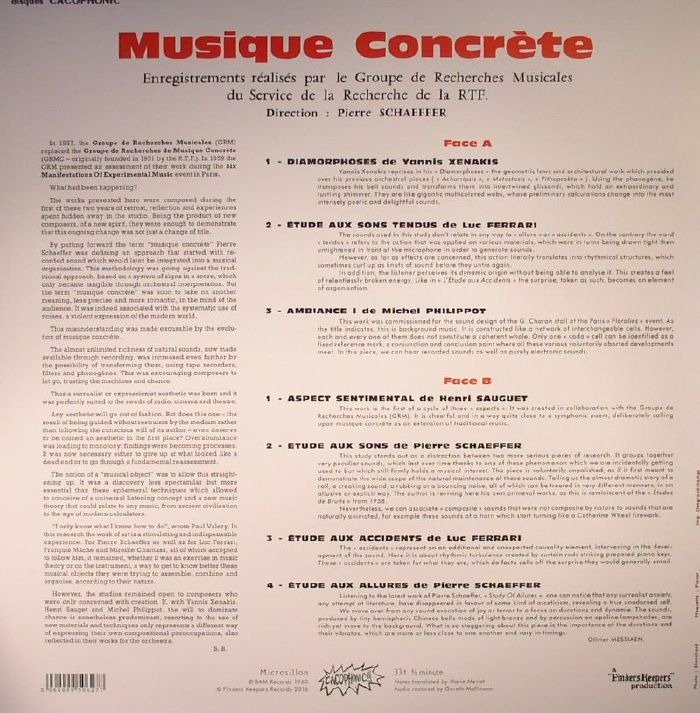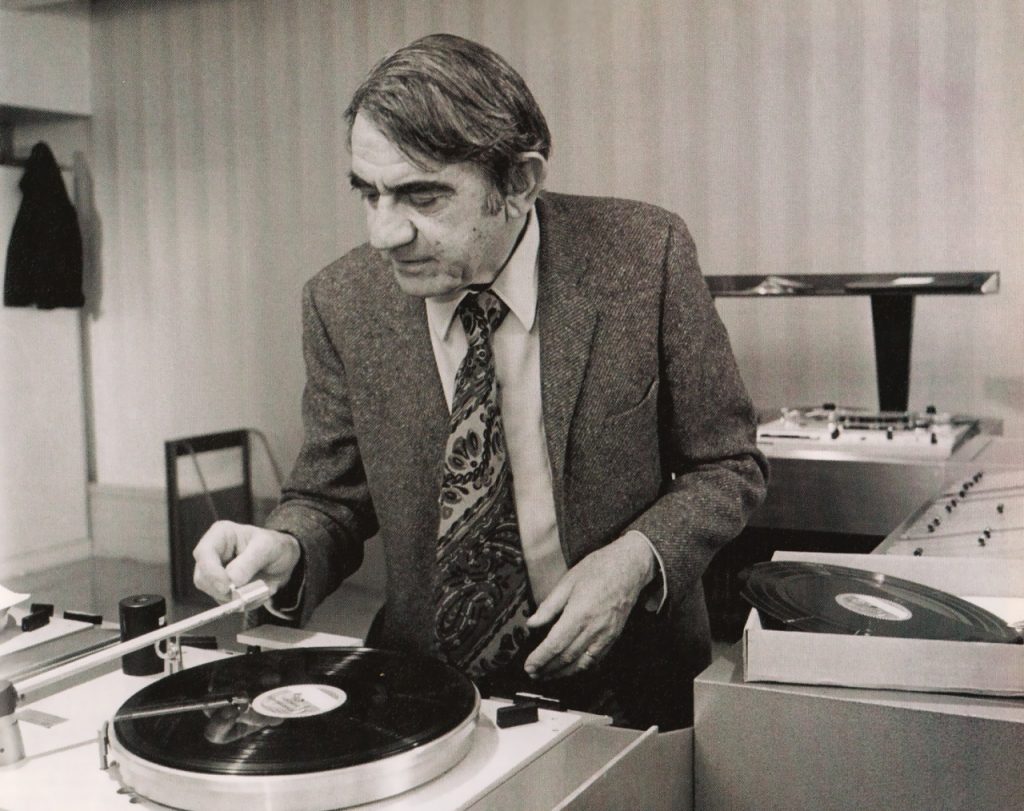

Originally contrasted with "pure" elektronische Musik (based solely on the production and manipulation of electronically produced sounds rather than recorded sounds), the theoretical basis of musique concrète as a compositional practice was developed by Pierre Schaeffer, beginning in the early 1940s.īy 1949 Schaeffer's compositional work was known publicly as musique concrète. Also, compositions in this idiom are not restricted to the normal musical rules of melody, harmony, rhythm, metre, and so on. It can feature sounds derived from recordings of musical instruments, voice, and the natural environment as well as those created using synthesizers and computer-based digital signal processing. Introduction Musique concrète (meaning "concrete music") is a genre of electroacoustic music that is made in part from acousmatic sound. The course is a collaboration between BEK and Bergen National Academy of the Arts.This page has a little more information on the style of music exemplified by our listening example, Poeme Electronique. every 2-3 weeks) to listen to, discuss and analyze a selection of works spanning the history of sound art as well as contemporary and popular music, combined with collective readings of selected relevant texts. We will meet for 1-2 hours at regular intervals (approx. This course will encourage an increased awareness and appreciation of the different perspectives, when listening to sound and music as well as through the development of a language for discussing sound and music. Artists working with sound are relating to and crossing the boundaries between contemporary fine arts, sound art, sound in the arts, contemporary music, popular music, experimental music, electronic music and more, all with their particular and interweaving histories and discourses. Sound is becoming an integrated part of contemporary artistic practices. Interieur Exterieur by Pierre Henry (Audio CD – 2000) La Ville by Pierre Henry (Audio CD – 1999) ListeningĮxcerpts from works by Pierre Schaeffer, Pierre Henry and others. Michel Chion: Guide des Objets Sonores (1983). This way Schaeffer introduces the concepts of “acousmatic listening” and the “sonorous object”. In the case of sound, for example, instead of distinguishing sounds with references to their sources (the sound of a guitar, the sound of a violin), phenomenology attempts to “reduce” (separate or distill) signal from source, and to restrict itself to describe the differences among sounds themselves. Phenomenology disregards the traditional philosophical distinctions between “subject” and “object”, “appearance” and “reality” and instead attempts simply to describe the contents of experience without reference to its source or subjective mode (e.g. Like many post-war French intellectuals, Schaffer was attracted to the philosophy of Edmund Husserl, founder of “phenomenology”. Schaeffer called his new music “musique concrète”, in contrast with traditional “musique abstraite”, which passed through the detours of notation, instrumentation, and performance. The Groupe de Recherches Musicales de l’Institut National de l’Audiovisuel ( GRM) was formed in 1958 by Schaeffer, François Bayle, Iannis Xenakis, Luc Ferrari, and others to continue Schaeffer’s research in working with recorded sounds. It quickly attracted several notable composers including Olivier Messiaen, Pierre Boulez, Jean Barraqué, Karlheinz Stockhausen, Edgar Varese, Iannis Xenakis, Michel Philippot, and Arthur Honegger.

In 1951 Schaeffer, along with the engineer Jacques Poullin, and composer-percussionist Pierre Henry, established the Groupe de Recherche de Musique Concrète (Research Group on Concrete Music) at RTF in Paris, establishing the first purpose-built electroacoustic music studio. Access to microphones and magnetic tape recorders (created in 1939), afforded by an association with the French national broadcasting organization, at that time the Radiodiffusion-Télévision Française, gave Schaeffer and his colleagues an opportunity to experiment with recording technology and tape manipulation. The development of musique concrete was facilitated by the emergence of new music technology in post-war Europe. Trained as a radio-engineer rather than musician, Schaeffer’s method of composition bore a closer resemblance to cinematic montage than it did to traditional musical composition.


 0 kommentar(er)
0 kommentar(er)
